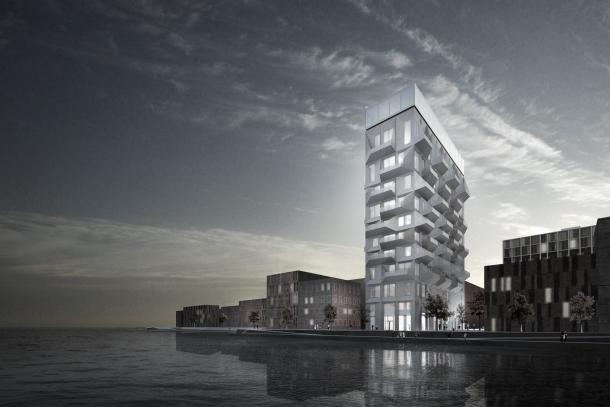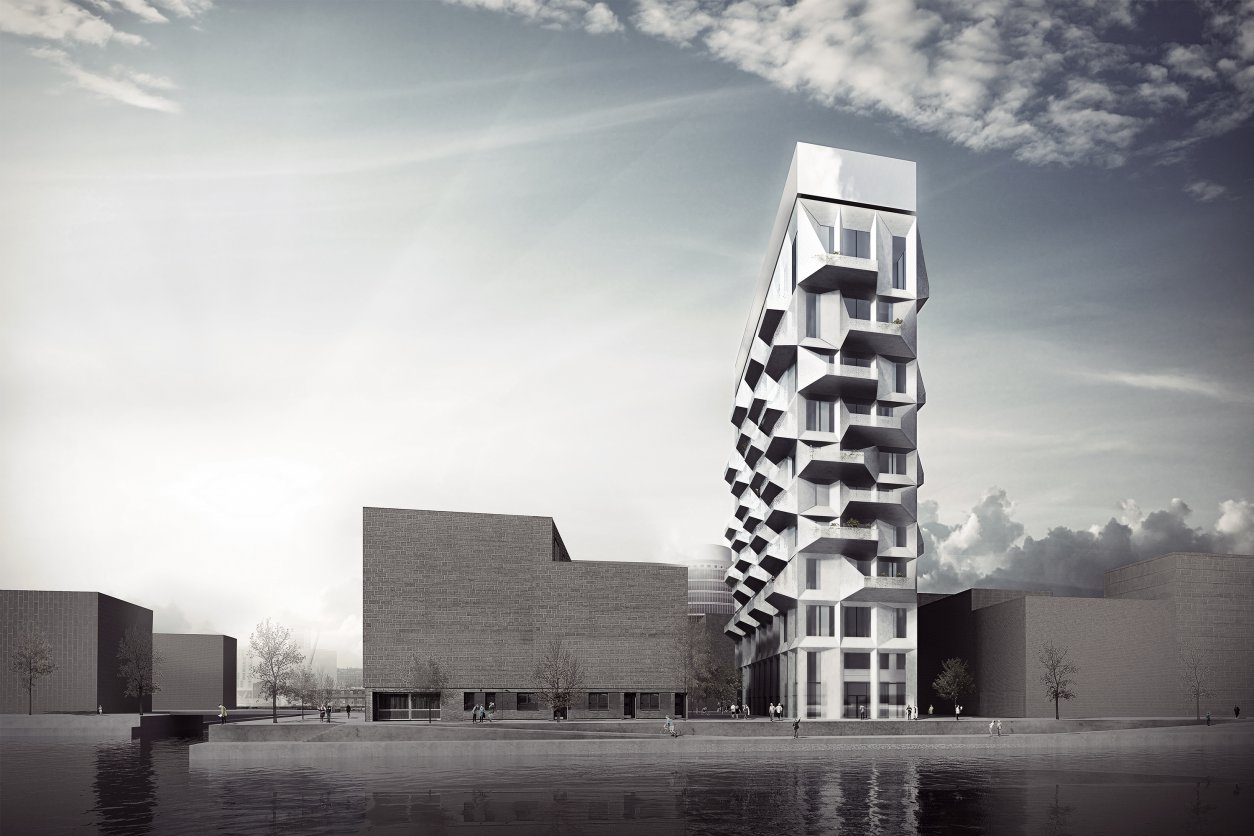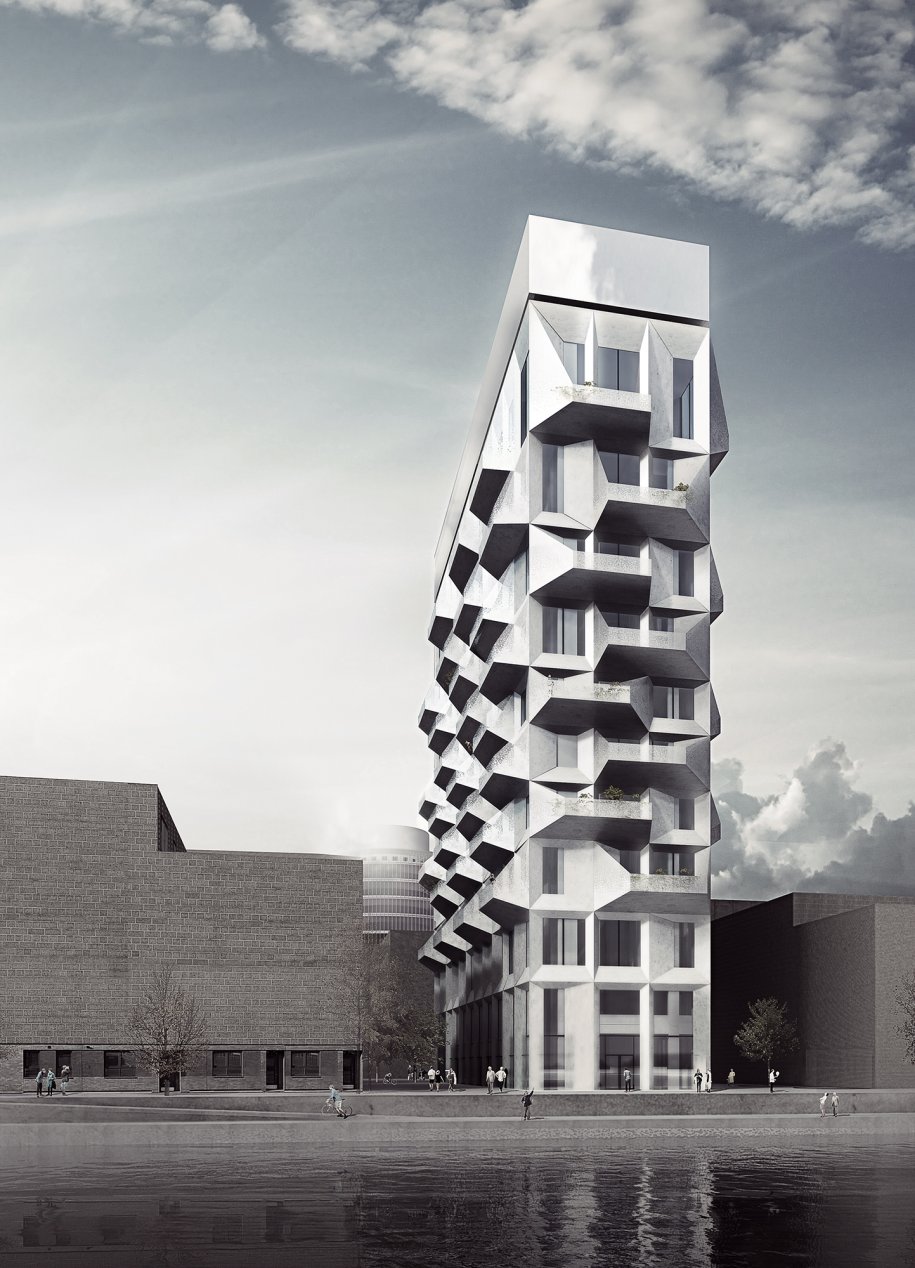A 200-foot-tall, 17-story industrial silo in Copenhagen’s Nordhavnen harbor is the largest and one of the most iconic landmarks of the area, but its function doesn’t match the needs of the district.
In 2013, By og Havn, a port development enterprise jointly owned by the city of Copenhagen and the Danish government, took the lead to transform Nordhavnen into a bustling, commercial area planned to bring tens of thousands of apartments and jobs.
Part of the transformation would involve the iconic silo’s conversion into a residential tower. Danish firm COBE Architects was brought in to execute the project, according to a report by Inhabitat.
To soften the industrial and highly utilitarian design of the original structure—which was used to store corn and grains for decades—COBE will envelope the original concrete structure with layers of different-sized white balconies.
The building’s interior will preserve the mostly exposed concrete of the original structure.

The silo as it exists today. Photo courtesy COBE Architects

Rendering of the planned conversion. Rendering courtesy COBE Architects
Because of the building’s original function and demand for different-sized spaces for storage, the new residential building will feature a variety of apartment configurations and sizes.
The waterfront development includes a United Nations campus called UN City that opened in 2013 at the eastern part of the Nordhavnen area.
According to Danish engineering website Ingeniøren, the Nordhavnen project uses 28,000 tons of steel, making it the largest construction job in Denmark and the largest consumer of steel in Northern Europe.
For more information and renderings, checkout the slideshow at cobe.dk.
Related Stories
| Aug 11, 2010
PBK, DLR Group among nation's largest K-12 school design firms, according to BD+C's Giants 300 report
A ranking of the Top 75 K-12 School Design Firms based on Building Design+Construction's 2009 Giants 300 survey. For more Giants 300 rankings, visit http://www.BDCnetwork.com/Giants
| Aug 11, 2010
Turner Building Cost Index dips nearly 4% in second quarter 2009
Turner Construction Company announced that the second quarter 2009 Turner Building Cost Index, which measures nonresidential building construction costs in the U.S., has decreased 3.35% from the first quarter 2009 and is 8.92% lower than its peak in the second quarter of 2008. The Turner Building Cost Index number for second quarter 2009 is 837.
| Aug 11, 2010
AGC unveils comprehensive plan to revive the construction industry
The Associated General Contractors of America unveiled a new plan today designed to revive the nation’s construction industry. The plan, “Build Now for the Future: A Blueprint for Economic Growth,” is designed to reverse predictions that construction activity will continue to shrink through 2010, crippling broader economic growth.
| Aug 11, 2010
New AIA report on embassies: integrate security and design excellence
The American Institute of Architects (AIA) released a new report to help the State Department design and build 21st Century embassies.
| Aug 11, 2010
Section Eight Design wins 2009 Open Architecture Challenge for classroom design
Victor, Idaho-based Section Eight Design beat out seven other finalists to win the 2009 Open Architecture Challenge: Classroom, spearheaded by the Open Architecture Network. Section Eight partnered with Teton Valley Community School (TVCS) in Victor to design the classroom of the future. Currently based out of a remodeled house, students at Teton Valley Community School are now one step closer to getting a real classroom.












